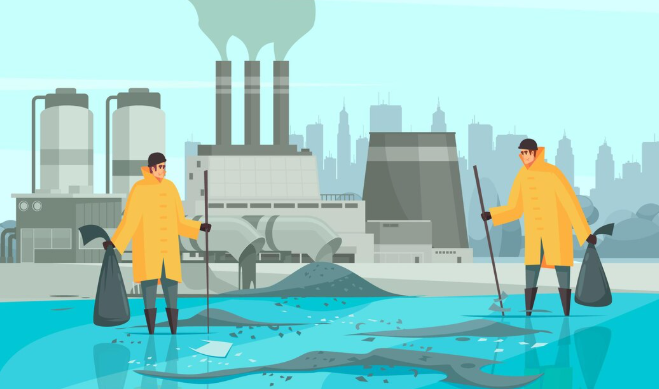What Are Sustainable Sanitation Solutions for Modern Facilities?

Sustainable Sanitation
The modern-day workplaces such as offices, schools, hotels, hospitals, or even industrial plants are getting pressure to achieve high levels of hygiene and minimize their environmental impact at the same time. This change has given rise to the urgency to find environmentally friendly sanitation systems and greener hygiene systems that provide cleaner, safer, and more responsible methods of managing restrooms, waste, water and generally hygiene of facilities.
Organizations do not select sustainability due to purely compliance anymore; they do it because it brings lots of long-term operational benefits, improved health of the environment and customer confidence. Now, let’s discuss the ways in which the modern facilities are implementing them as well as why it is becoming more important than ever.
The relevance of Sustainable Sanitation Nowadays.
The conventional sanitation systems require high amounts of water, harsh chemicals and manual service. The practices not only cost more operation but also pollute the environment by chemical discharge, overuse of water and indoor-air pollution.
Sustainable sanitation solutions can help stop this cycle through systems and products that are water saving, less dependent on chemicals and more efficient in using energy. The most popular sustainable sanitation technologies are:
- No-flow or low flow urinals which conserve thousands of liters of water each month.
- Cleaning material that is non-toxic and bio-grade.
- Robotic flushing and dispensing machines that minimize waste of products.
- On-site wastewater treatment solutions.
- Bad odorless restroom technologies.
These systems combined make hygiene and sustainability to be complementary.
Green Hygiene Systems: An Intelligent Cleaning Process.
The present day consumers and employees would want to work or reside in an environment that prioritizes health and environmental well-being. It is here that the point of use hygiene systems that are eco-friendly come into play.
Not only these systems reduce environmental damage but they also enhance user experience, safety and long-term facility performance. Examples include:
1. Green Restroom Technologies.
Touchless water faucets, sensor-operated soap dispensers, low flow urinals and biodegradable hand towels are used to develop a low waste restroom environment that is hygienic. They also minimize cross-contamination, which is necessary in busy places.
2. Eco-friendly Cleaning Chemicals.
The formulas produced through green cleaning using plant-based or non-toxic chemicals aid in maintaining cleanliness on the surface without exposing consumers to rough chemicals. The products are produced naturally and they do not emit fumes that are toxic.
3. Best Wastewater Solutions.
Sustainable wastewater systems can be invested in by schools, hotels, corporate buildings and industrial units to recycle greywater and cut contamination to enable the facilities to comply with environmental requirements.
4. Smart Odor-Control Systems
Green odor control involves the use of natural enzymes and plant-based odor neutralizers rather than the chemical air fresheners. This makes the air purer and healthier, without any chances of breathing issues.
Such developments render environmentally-friendly hygiene systems practicable and credible alternatives to the ancient hygiene systems, which are heavily dependent on chemicals.
Most of the beneficial locations of these sustainable solutions would be.
✔ Offices
Sustainable washroom and hygiene technologies are adopted by businesses to reduce overheads, cut down on the use of water, and offer better hygienic environments to employees and clients.
✔ Hotels & Resorts
Green solutions enhance guest experience, odor reduction, ease of maintenance and assist hospitality industry to achieve international sustainability standards.
✔ Schools & Universities
eco-friendly hygiene systems provide a safer and healthier restroom to children, minimize the waste generated in the operations and assist the institutions in the responsible management of the wastewater.
✔ Healthcare Facilities and Hospitals.
Infection control and patient safety require the use of safe and non-toxic cleaning solutions, and the latest sanitation technologies.
✔ Industrial and Manufacturing Units.
Green sanitation minimizes the risk of contamination, enhances safety of employees, and promotes green certification.
Advantages of the selection of sustainable sanitation systems.
Switching to environmentally friendly sanitation and hygiene technologies will offer long-term benefits:
1. Reduced Water Consumption
The use of water-saving urinals, recycling-based systems, and efficient taps reduces the use of water by a significant amount.
2. Lower Maintenance Costs
The quality sustainable systems have lower frequencies of servicing and the use of harsh chemicals is minimized.
3. Better Indoor Air Quality
Ecological hygiene products do not produce the toxic fumes as in the case of traditional cleaners.
4. Healthier Restroom Environments.
The whole hygiene experience is enhanced to odor-free toilets and touchless fixtures.
5. Strong Brand Image
Employees and customers love brands that have environmentally responsible solutions.
FAQs
Q1. Why are sanitation solutions sustainable?
A sanitation system is said to be sustainable in the sense that it uses less water, less pollution through chemicals, and enhances efficiency of energy and aims at long-term environmental health.
Q2. Do green hygiene products perform the same task as chemical cleaners?
Yes, good green cleaning products contain natural enzymes and vegetable ingredients that are as good as chemicals in cleaning without damaging their users or the environment.
Q3. Are sustainable hygienic systems more expensive?
First installation will incur a little bit higher cost, yet the saving in water, and maintenance and chemical consumption in the long run will usually pay off the initial investment.
Q4. Is it possible to renovate offices and hotels in stages?
Absolutely. Organizations can begin by making small modifications such as waterless urinals or other green cleaning products and replace these with full sustainable systems.








